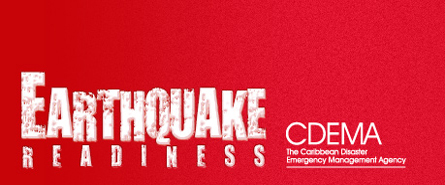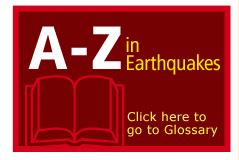|

DOWNLOAD DROP, COVER, HOLD ON Message to Public Administrators
Creating your Emergency Plan
(Adapted from Porto Rico Seismic Network)
Basic Elements of an Emergency Plan for Businesses and Institutions
I - Purpose of the Plan:
General purpose and coverage of the plan.
II - Situations and Suppositions:
Situations:
- Name and exact location of the facilities.
- Description of the possible dangers that can affect the facilities.
- Number of employees, students, visitors, and handicapped people.
- Type of construction.
- Any situation or condition that may constitute a risk for the security of the people and/or property.
- Facilities vulnerable to fires, earthquakes, hurricanes, floods, landslide, tsunami.
- Details of storage of dangerous materials, equipment that can cause some emergency (e.g. boilers, gas tanks).
- Other risks outside the control of the institution (e.g. river, gorge, powerboats, airport, factories).
Suppositions:
- The plan is widely known by facility users.
- Support that you will have of other organizations.
back to top
III - Concepts of operations:
The procedures for before, during and after for the different types of emergencies. This must be through the four phases of the Comprehensive Disaster Management (mitigation, preparation, response and recovery).
IV - Organization and allocation of responsibilities:
Indicate who/which organization is responsible for the management of any emergency and the responsibilities assigned to each member.
V - Direction and control:
Explain the structure for the control and coordination of the resources available:
- Emergency Operations Center
- Resources and materials
- Information systems
VI - Continuity of operations:
- The chain of command/identification of alternates within the institution, in case of absence of the director, coordinator, etc.
- Measures to ensure that the institution continues to operate and serve.
- Measures to conserve important documents, equipment, materials.
- Agreements with other organizations for auxiliary help services.
- Alternate facilities to continue operation.
VII - Administration and Logistics:
Identify available resources and how these will be managed. Topics that must be addressed include:
- Retention and requirements of files and reports.
- Communication System.
- Protection claims and benefits of employees and/or property.
- Mention if there are heliport facilities.
- Alarm System.
- Emergency Generators.
- Sprinkler and fire extinguisher systems.
- Elevators, manual operation.
- Air conditioner system.
- Firemen facilities, rescue teams.
- Emergency groups list.
- Building blueprints.
- Installations of electrical energy facilities.
VIII - Development and maintenance of the plan:
Provide details of proposed frequency of plan review and identify person(s) with responsibility for review.
IX - Definitions:
Prepare a glossary of commonly used technical and scientific terms in the plan.
X - References:
Federal Emergency Management Agency (FEMA) 1981, Disaster Operations, CPG 1-6, Washington, D.C.
Basic Elements of an Emergency Plan, Puerto Rico Seismic Network
back to top
Additional Business Guidelines
- For Hotels/Guesthouses on the Coastline:
- Provide guests with tsunami preparedness information and plans.
- Provide staff (including seasonal workers) with tsunami preparedness information and plans.
- Ensure that guest rooms are appropriately retrofitted with earthquake and tsunami threats in mind.
- Have extra food, water, flashlight, radios and batteries available.
- For Laboratories and Facilities where Chemicals are Stored:
- Secure gas cylinders well in an upright position.
- Ensure that pressure regulators are removed and cylinder caps are in place on cylinders that are not in use.
- Two cylinder straps or chains fastened to the lab wall are recommended for each cylinder.
- Store chemicals properly.
- Recap chemicals and return them to their storage cabinets immediately after use.
- Keep chemical storage cabinets closed and latched.
- Secure chemical storage cabinets to prevent tipping or movement.
- Equip chemical storage shelves with lips or restraints to keep chemicals and glassware in place.
- Remove waste chemicals regularly.
- Store chemicals in secondary containment trays or tubs.
- Store non-compatible chemicals separately.
- Close fume hood sashes as far as possible to contain spills while still maintaining adequate ventilation rates.
- Secure heavy equipment and furniture that might block exit routes. Maintain exits and aisle ways free and clear of obstructions.
- If the facility has equipment and/or processes that could be damaged or pose a fire or health hazard if power was suddenly lost, make contingencies to provide backup or emergency power to maintain critical systems.
- Ensure safety system (i.e., fire extinguishers, safety showers, eye washes) is accessible and in proper operating condition, and that everyone in the lab knows how to operate them.
- Have extra spill containment equipment available.
- Post the short-term evacuation checklist near the exit of the lab. This is a check list of essential steps to take before leaving the building.
- Have a long-term plan in case you cannot get back into the lab for at least a week.
- Make provisions for having enough liquid nitrogen for the freezers (normal distribution systems will not work, so you should have your own supply).
- Periodically review the disaster preparedness plan to ensure that:
- the plan meets the requirements of current laboratory operations,
- all staff are familiar with both the overall plan and their specific role, and
- the plan is successful in accounting for staff and in reporting staff and laboratory/facility conditions to key administrators/officials.
- For Hospitals and other Critical Facilities:
- Secure critical medical equipment and hazardous materials.
- Secure moveable equipment and furniture. Wheels should be prided with brakes or other restraints and staff should be trained to always engage these when the wheeled items are not being moved.
- Ensure adequate water storage and supply, standby power and telecommunications within the facility to support post disaster operations.
back to top
|














